Power consumption and loads
The power consumption of the PNY GTX 1650 XLR8 OC is approx. 6 watts in the idle right where you would have expected it. PNY sets the reference for the power limit of this card and also sets the power target for the factory state to 75 watts. However, the measured power consumption for gaming is significantly lower at just under 62 watts, while the 62 watts are hardly exceeded in the stress test. The card never really exhausts the maximum power limit.
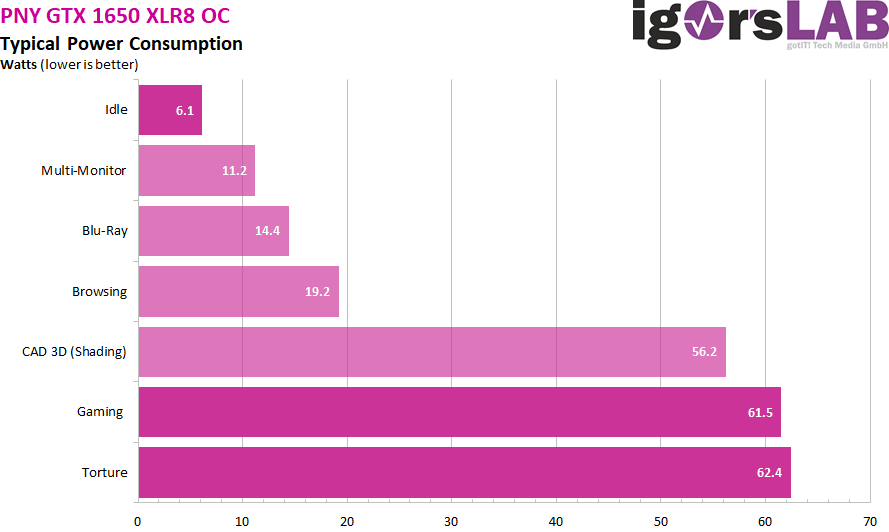
Here is a short excerpt from what the manufacturer of this card has given in the firmware limits:
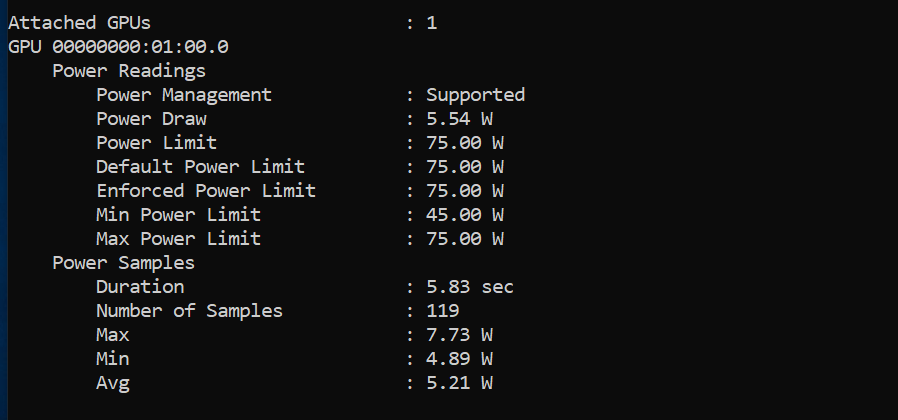
The voltages are in the expected range, but do not reach 0.97 volts in the cold state. The average value over the entire runtime tends to be around 0.925 volts and remains relatively constant when gaming after heating.
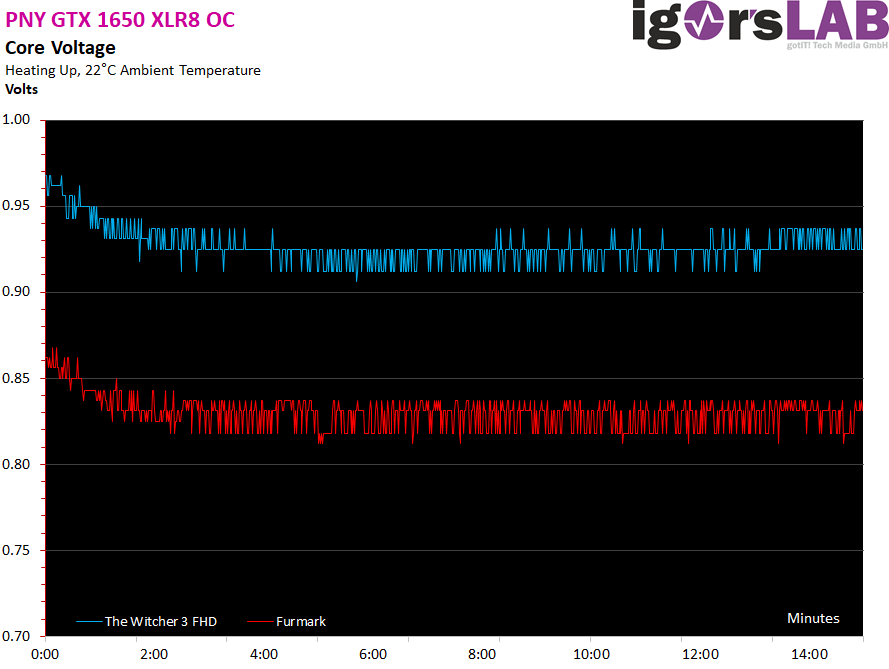
With the 5.2 Ampere Maximum, the load on the motherboard slot is still completely within the limits of the standard, i.e. exemplary. But there is not much more to be done, thanks to the Power Limit.
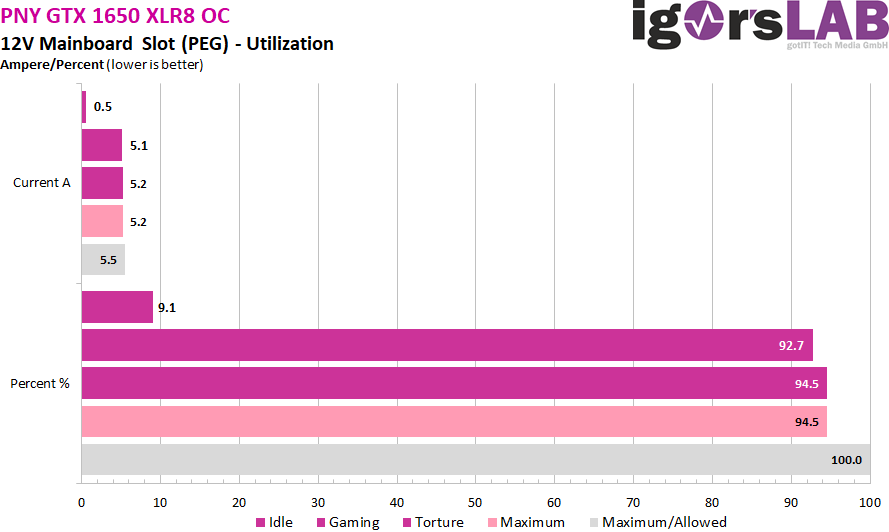
Power supply design and peak loads/currents
As I have already demonstrated in detail in my basic article “The fight of graphics card against power supply – power consumption and load peaks demystified”, there are also temporarily higher loads in the millisecond range, which are unfavorable in case of unfavorable designed or improperly equipped power supplies can already lead to unexplained shutdowns. The TBP (Typical Board Power) measured by the graphics card manufacturer or the reviewers does not really help for a stable design of the system.
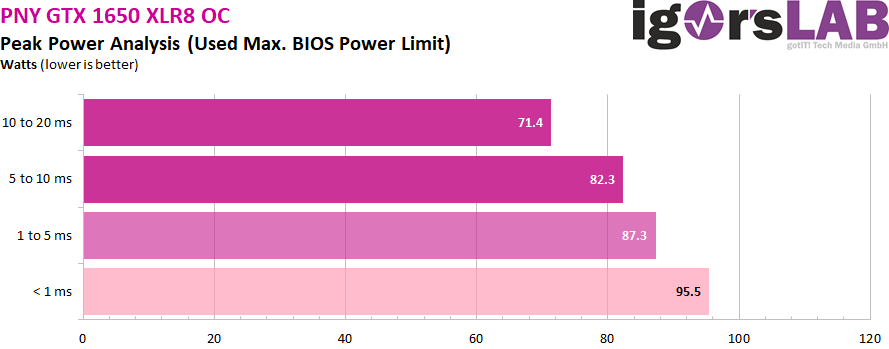
Peaks with intervals between 1 and 10 ms can lead to shutdowns with very fast-reacting protective circuits (OPP, OCP), especially for multi-rail power supplies, although the average power consumption is still in the norm. For this card with a light factory OC, I would therefore calculate with 80 watts in order to have enough reserves in case of a case. A short excerpt with high resolution now shows us the 20 ms measurements (10 S intervals), how I run them automatically for valuation:
Detailed recording of average power consumption and flowing currents
As usual, I now also set aside the power consumption and the flowing currents as detailed graphics of my oscillograph measurements. A service that hardly anyone else offers and which shows how the maps “tick” in detail. Note the almost completely unused 3.3-volt rail:










































Kommentieren